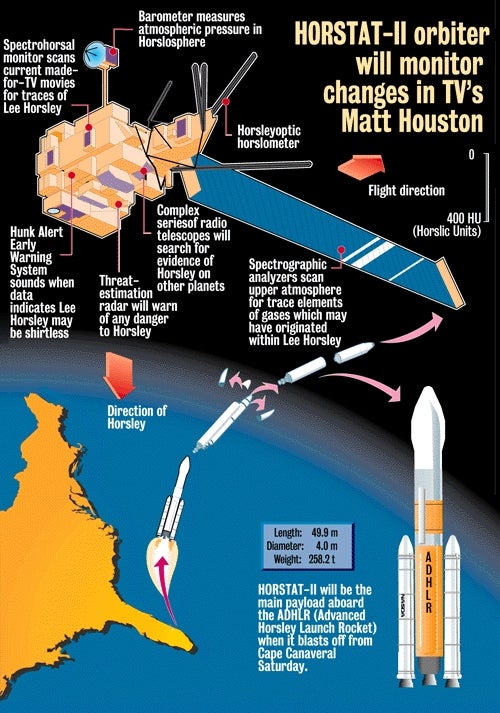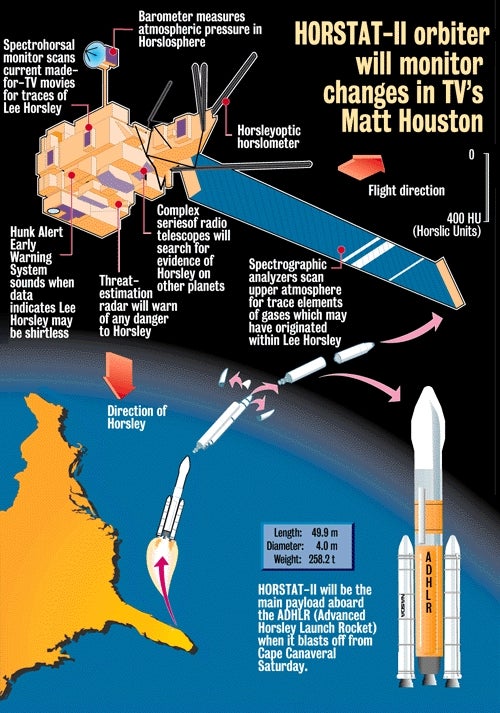CAPE CANAVERAL, FL—In what is considered the most ambitious mid-’80s TV star-monitoring program in its history, NASA on Monday unveiled the HORSTAT-II satellite, a $5.1 billion Lee Horsley-surveillance system.

Scheduled to be launched Saturday, the HORSTAT-II promises up-to-the-minute statistical data on the whereabouts and activities of the handsome, mustachioed star of Matt Houston.
From its Horslosynchronous orbit 800 kilometers above the earth’s surface, HORSTAT-II will use its array of microsensors to gather and analyze Horsley-related data, which will be relayed to NASA bases at Cape Canaveral and NORAD.
“HORSTAT-II’s state-of-the-art imaging technology will allow it to isolate Mr. Horsley out of a crowd of thousands,” said NASA team leader Dr. Martin Heller. “It is specially programmed to home in on the unique particle wavelength, temperature and electromagnetic signature emanating from the actor’s Horslosphere.”
“Our infrared imaging system will be able to pinpoint Horsley’s location even when he’s relaxing in an exclusive Southern California spa,” Heller said. “In addition, HORSTAT-II’s spectrohorsal scanning equipment will monitor Horsley’s surface temperature so closely, we’ll be able to tell if he’s developing a sunburn before he even feels the symptoms.”

“This is a great breakthrough for science and for NASA,” President Clinton said Tuesday during a White House speech. “Our network of FBI agents and spies are no longer all we have to rely on in our fervent quest for up-to-the-minute information about the man who from 1982 to 1985 was America’s third-favorite TV detective.”
Pamela Hensley, who co-starred on Matt Houston as the buxom, brassy C.J. Parsons, was equally enthusiastic about the new satellite. “This should forever change the way America looks at the best co-star I ever had, Lee Horsley.”
Within months, internet users will have access to the satellite’s data at www.nasa.com//leehorsley, which will provide updates on HORSTAT-II’s findings every 15 minutes.
“I’m excited,” said Bob Washburn of Mechanicsburg, PA. “Someday, I’m sure, my children will be shocked to learn there was a time when you had to wait for the morning paper to find out what Lee Horsley had been doing throughout the night. Soon, real-time info will be at our fingertips.”
HORSTAT-II is widely considered the most advanced star-tracking system ever, even more powerful than the $4.4 billion UGLAB-IV satellite which monitored and collected data on actress Leslie Uggams for more than 10 years before crashing into the Indian Ocean in 1983.







